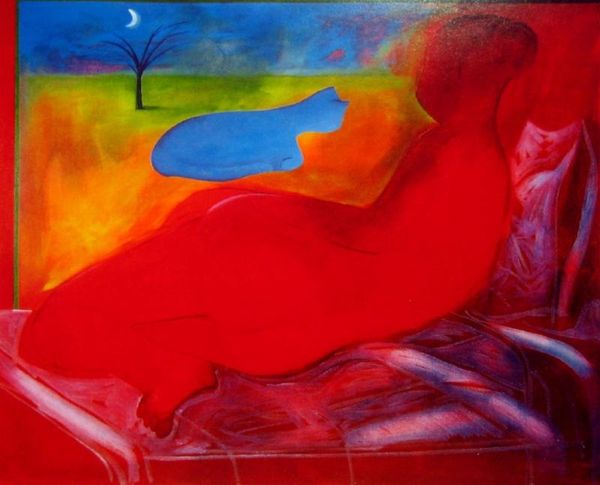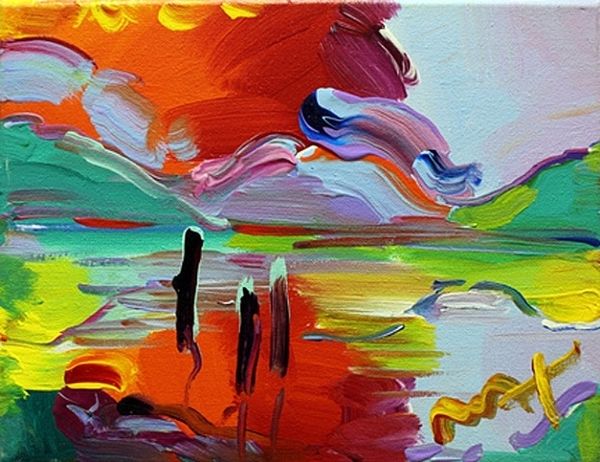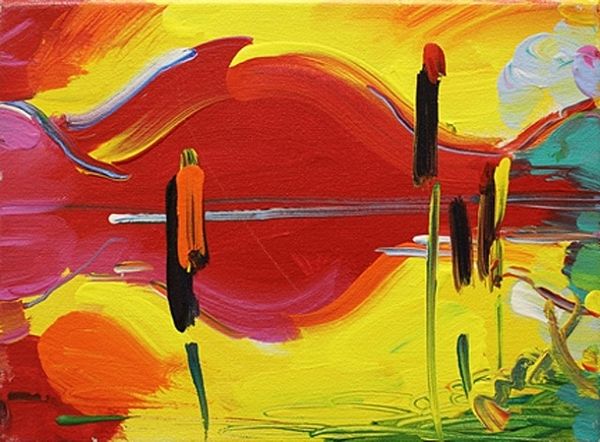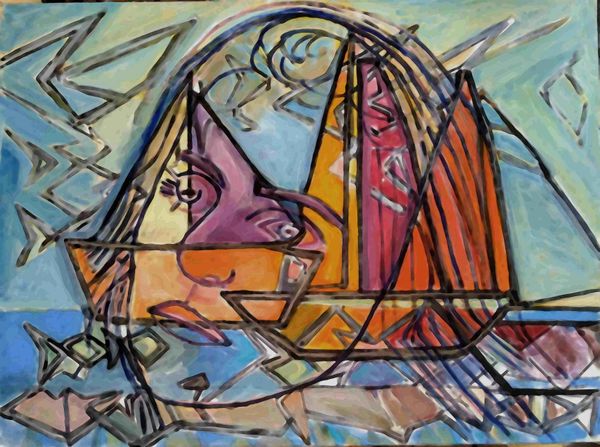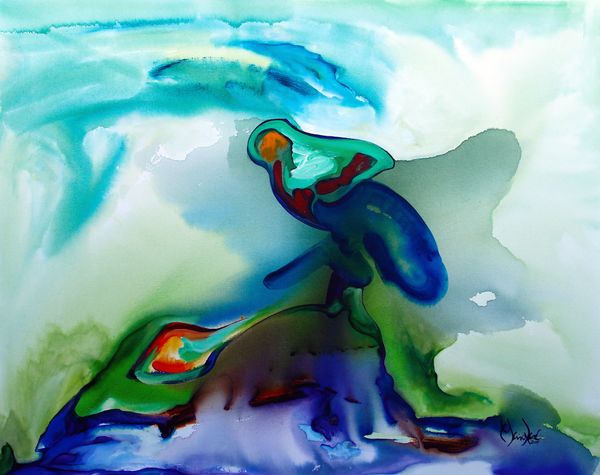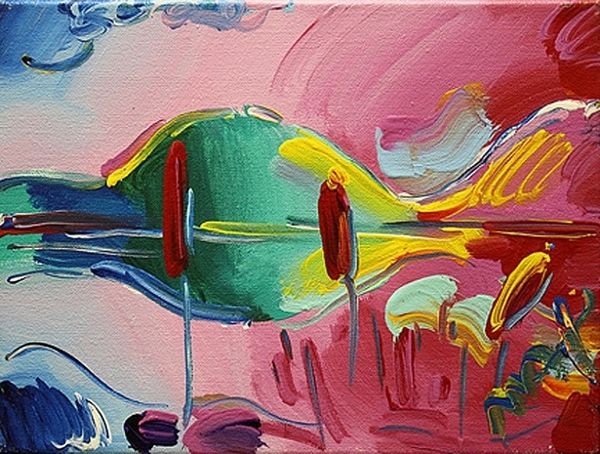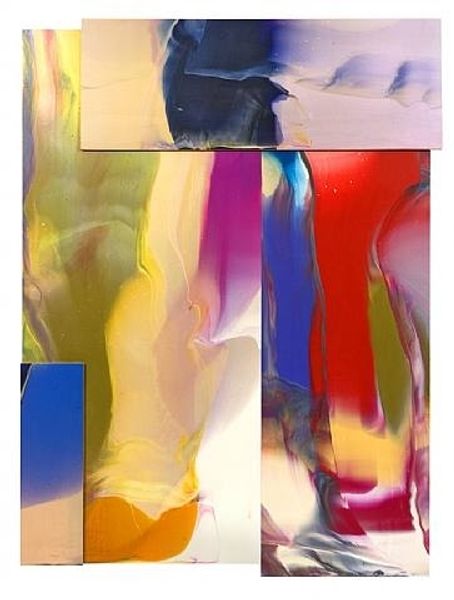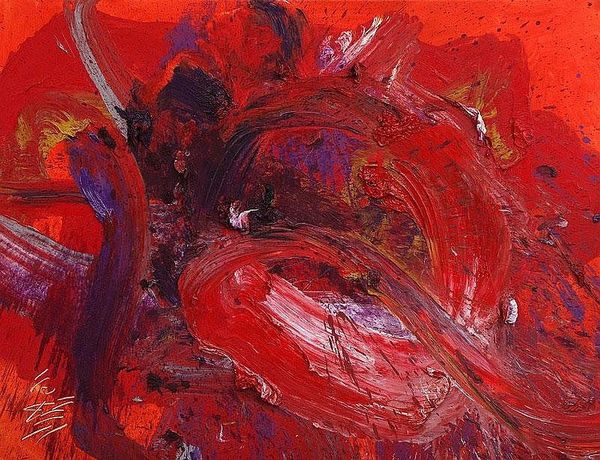
Copyright: Peter Max,Fair Use
Curator: Here we have Peter Max's "Buddha Moon (Monk Sunrise)," painted in 1999. It’s an acrylic on canvas piece. What are your initial thoughts? Editor: Well, it strikes me as overwhelmingly optimistic, almost saccharine. The riot of vibrant colours, especially that intense red-orange, feels designed to evoke pure joy. There's a bold directness to it that's hard to ignore. Curator: Max's work is interesting to consider in relation to Pop Art's interest in mass appeal. How does the use of Eastern iconography function within that context? His engagement with spiritual themes has been noted, yet he simplifies imagery, making it almost universally accessible, or, some might say, appropriative. Editor: It certainly flattens complex cultural narratives. The solitary figure, ostensibly a monk, is anonymized, reduced to an element within this intensely colorful landscape. I question if the composition fosters genuine understanding, or if it reinforces an Orientalist gaze. It risks turning spirituality into a consumable aesthetic. Curator: But does that accessibility open doors for dialogue? Max's work gained prominence in a period marked by cultural upheaval, Vietnam war protests, civil rights activism… His imagery, including that of peace and Eastern philosophies, resonated with a generation seeking alternative values. Editor: Perhaps. But it also raises questions of how genuine the message is when coupled with commodification. Is it about genuine understanding or cultural trend? And how can museums like us address that when showcasing such works? Curator: Indeed. It prompts us to consider the artist’s intentions within their socio-political context. Peter Max was also making commercial choices, appealing to a broad audience to become successful. But one should be wary about turning complex cultural identities into marketable objects of desire. Editor: Right. And that critical awareness needs to be embedded in how we interpret it now. For all the painting's joyful appearance, its simplistic cultural appropriation also speaks to global inequalities in the art world. Curator: Food for thought about this image. Thanks. Editor: Likewise.
Comments
No comments
Be the first to comment and join the conversation on the ultimate creative platform.
